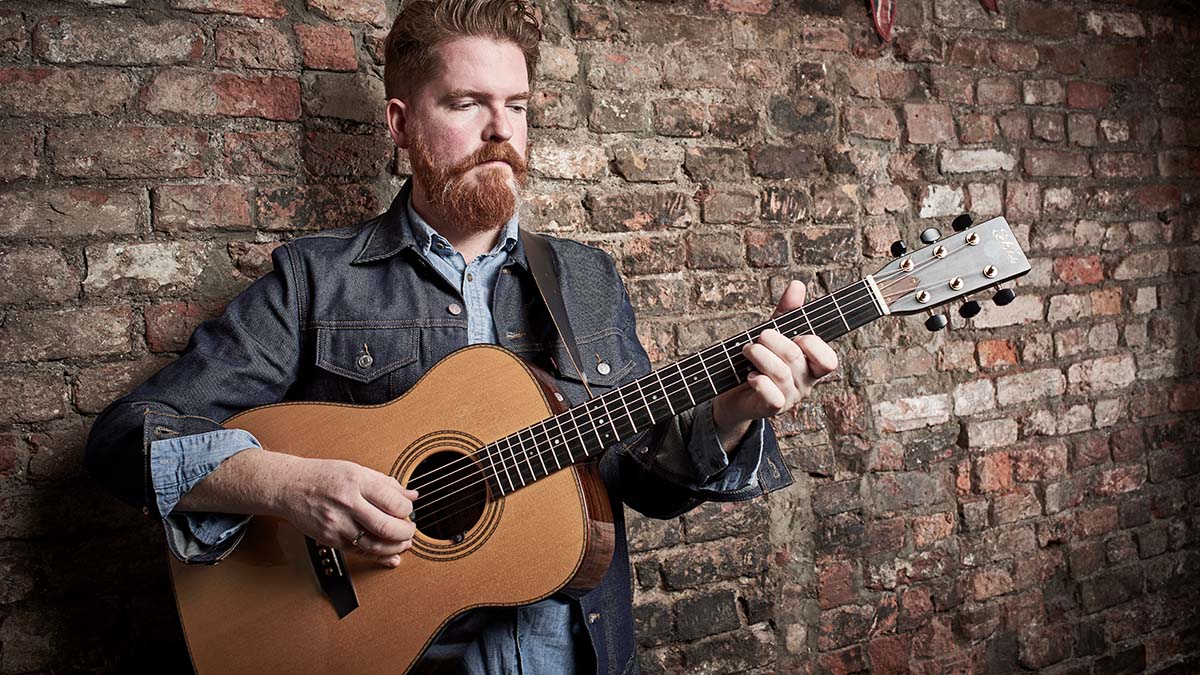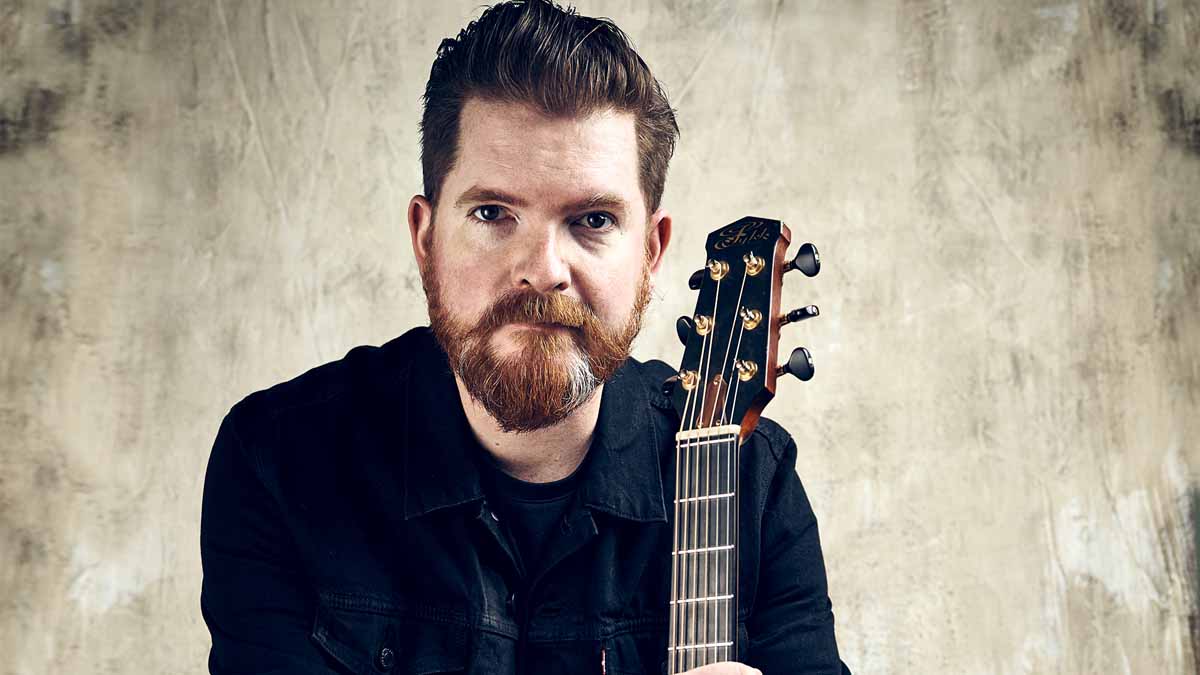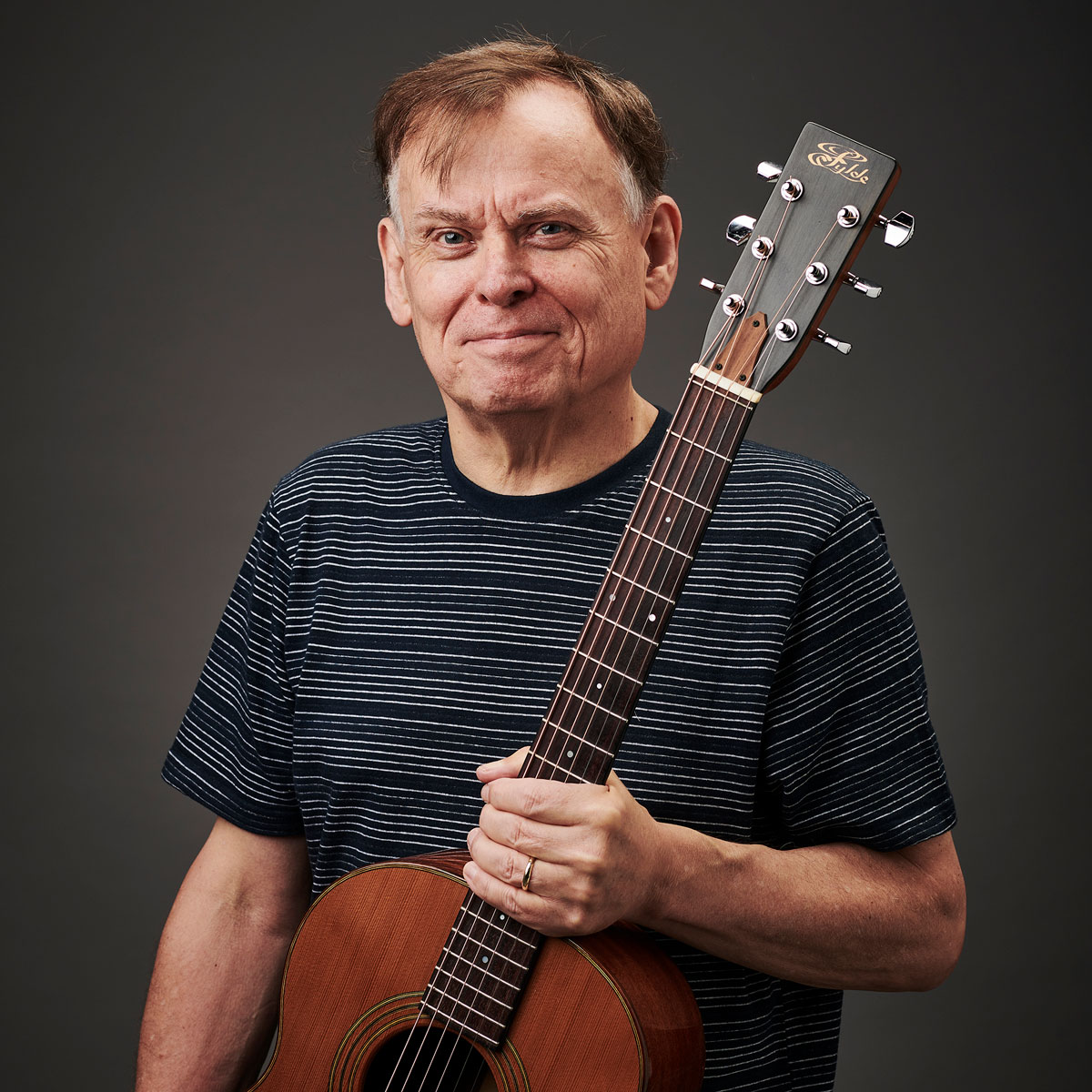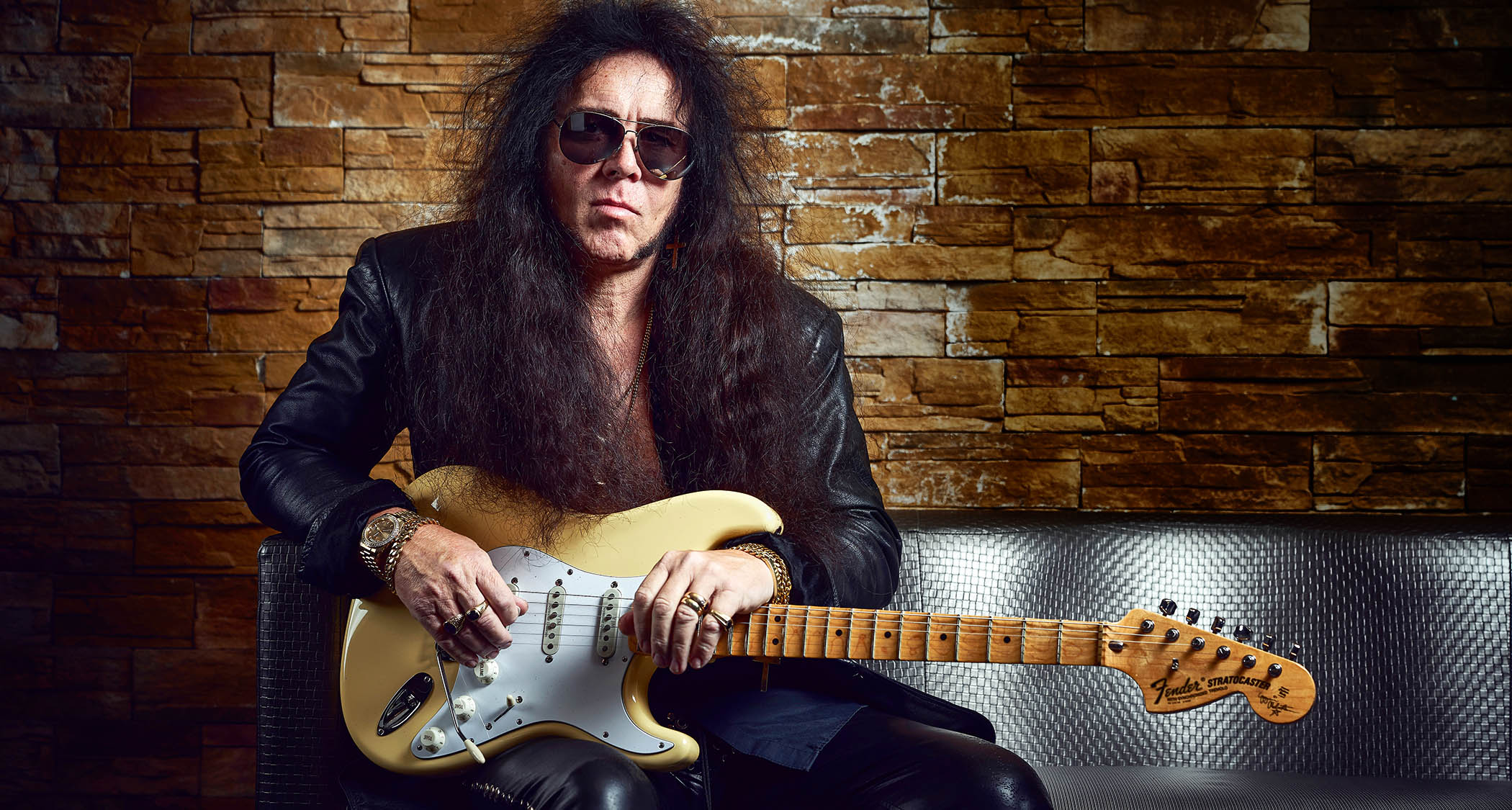John Smith: ”The only way to cope with life is to write songs, for me. As soon as I picked up the pen, the songs started falling out”
Recorded at Real World studios last September, The Fray finds the acoustic ace exorcising personal turmoil in song – and leaning heavily into electric guitars

“I’m really happy with it,” John Smith declares at the beginning of our conversation about his new album, The Fray. The title refers to recent turbulent times in John’s life, with the cover summing up everything with a bright yellow flower that’s seen better days.
But writing and recording the music seems to have been a cathartic experience for the singer-songwriter. “I went with that brash yellow because it’s optimistic, it’s a happy colour. The whole time my wife has been calling the record ‘Sad songs, happy man’.”
The Fray’s creation was fast, with John and co-producer Sam Lakeman spending only a week at Peter Gabriel’s studios just outside of Bath. “Yes, well… Real World isn’t cheap, y’know,” John says. “I fund my records myself and so we worked long days and came out the other end with this album.”
Can you tell us about the writing process for the album?
“I’d written a couple of the songs the year before, in 2019. When I was on the road, driving from Asheville to Nashville, I stopped off and wrote a couple of songs with Sarah Siskind. The rest of the songs kind of came to me in the spring of 2020. In among everything that was going on I was having a bit of drama in my personal life – just real life happening, life and death stuff – and that informed the songs.
“As ever, life provided the impetus for writing a record, y’know? Ordinarily, I was just going to be resting after two years on the road, but then all this stuff happened and the only way to cope with life is to write songs, for me. As soon as I picked up the pen, the songs started falling out. Then, come September, I had enough to go and record.”
I had a very clear idea of how I wanted it to sound, and Sam is such a great engineer and safe pair of hands that I wanted him by my side when I was committing all of this stuff to tape
You called on Sam Lakeman to co-produce the album – you’ve worked together in the past, haven’t you?
Get The Pick Newsletter
All the latest guitar news, interviews, lessons, reviews, deals and more, direct to your inbox!
“Yes, he produced Hummingbird and Headlong. With this one we decided it would be a co-production; we would both be steering the ship. I had a very clear idea of how I wanted it to sound, and Sam is such a great engineer and safe pair of hands that I wanted him by my side when I was committing all of this stuff to tape. So he came in and we co-produced the record and it worked really well. We worked fast and we worked really hard, and in seven days we had the record.”

How close was the sound you had in your head to the finished product?
“We hit it. There were a few twists and turns along the way, a few bits of instrumentation that I put down that didn’t quite work out, but recording is an instinctive process.
“When you’re recording your own songs you have to make decisions on the fly that can shape the whole album, because if you do away with a string arrangement here or some drums there, suddenly the rest of the album should sit in the flow that you’ve dictated.
“We just allowed ourselves to be supple and to roll with it. The main thing was that I went into the studio able to play everything in one take. There’s a lot of stuff on the album that I recorded once and didn’t play again.”
I’m leaning heavily into the electric guitar on this record and it’s a little more effected, which kind of creates this impression of density, but still always going with the mantra that less is more
Did you find that the songs suggested the arrangements in terms of instrumentation?
“Yeah, I think so. There were some that really felt like they wanted some drums, but there’s not an awful lot going on. For a lot of it, there’s just the implication of a groove or an arrangement and there’s just a bit of clarinet, a little bit of flugelhorn here and there…
“I’m leaning heavily into the electric guitar on this record and it’s a little more effected, which kind of creates this impression of density, but still always going with the mantra that less is more: if there’s space, you don’t have to fill it, just let it breathe.”
What electric guitars did you use on the album?
“I’ve got three main electric guitars at the moment. I’ve got my ‘kind-of-Coodercaster’ – it’s not a proper ‘Coodercaster’ but it’s a Strat with gold foil pickups and heavy flat-wound strings and it’s a great slide guitar. I’ve got a Heritage 530 with P-90s that is a beautifully warm, transparent-sounding guitar, and I’ve got a ’56 Telecaster replica that has a humbucker in it – it’s a sunburst with heavy flat-wounds and it’s slung in a low C tuning – and as soon as I picked up that guitar I wrote Hold On.”
But you haven’t completely forsaken acoustic guitars?
“No, there’s a Fylde Falstaff and an Alexander on there and I’ve got my old ’72 Martin D-28 and a ’64 Gibson LG-1 and I bought myself a Ramirez classical guitar, having played one in America. David Pulkingham, from Patty Griffin’s band, plays one and as soon as I played his I had to get one.
“I came back and sold a few things, bought myself a Ramirez and immediately wrote Star-Crossed Lovers on it. I’d already written Sanctuary when I bought that guitar, but, man, I’m so glad I’ve got it because I couldn’t play that song on a steel-string.”
How did you go about mic’ing the acoustics up in the studio?
“I think Sam knows my guitars really well and he just sits in front of the guitar, moves his head around a little until he’s happy and then he’ll replace his head with a very expensive Neumann microphone – and Real World has no shortage of really nice expensive Neumann microphones. The signal chain was ridiculous. We had a very expensive mic into a beautiful Neve preamp and it just came out sounding great; it came out sounding just like my guitar.”
The signal chain was ridiculous. We had a very expensive mic into a beautiful Neve preamp and it just came out sounding great; it came out sounding just like my guitar
You mentioned that you used a few effects on The Fray…
“My mainstays are the Strymon BlueSky and El Capistan, and I was using an Origin Effects SlideRIG, a fantastic tool just for squashing the guitar sound, and I’ve got a Jam Pedals WaterFall, which is a really beautiful wet chorus that I was using on the record as well.
“These Jam Pedals are from Greece and they’re handmade analogue pedals – they sent me a couple and they’re incredible. Amp-wise, I used a Benson Nathan Junior and the AER Alpha.”
What are your hopes for when we’ll be able to get back out on the road?
“Hopefully by the autumn, when the world achieves some kind of normalcy, I’ll go out and play these songs for people, because that’s my job.”
- The Fray is out now via Commoner Records.
With over 30 years’ experience writing for guitar magazines, including at one time occupying the role of editor for Guitarist and Guitar Techniques, David is also the best-selling author of a number of guitar books for Sanctuary Publishing, Music Sales, Mel Bay and Hal Leonard. As a player he has performed with blues sax legend Dick Heckstall-Smith, played rock ’n’ roll in Marty Wilde’s band, duetted with Martin Taylor and taken part in charity gigs backing Gary Moore, Bernie Marsden and Robbie McIntosh, among others. An avid composer of acoustic guitar instrumentals, he has released two acclaimed albums, Nocturnal and Arboretum.
“There’s a slight latency in there. You can’t be super-accurate”: Yngwie Malmsteen names the guitar picks that don’t work for shred
“David Crosby said, ‘I don't like it, man. That folky 2/4 time never gonna play on the radio’”: The Byrds needed a hit or they’d be dropped. Releasing a cover of Bob Dylan's Mr. Tambourine Man as their first single was a gamble that paid off

![A black-and-white action shot of Sergeant Thunderhoof perform live: [from left] Mark Sayer, Dan Flitcroft, Jim Camp and Josh Gallop](https://cdn.mos.cms.futurecdn.net/am3UhJbsxAE239XRRZ8zC8.jpg)









